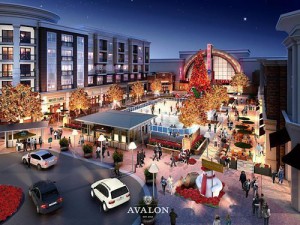Share This
Related Posts
Tags
Renting to Millennials
By Erica Rascón on Jan 22, 2016 in News
You know all of those reports on Millennials and their love for tiny, urban spaces in walkable communities? They might be wrong. It turns out that Millennials value space and authenticity more than we previously believed—and the two rarely go hand-in-hand.
A recent study suggests that while Millennials do enjoy their apartments in urban environments, they’re willing to leave rentals behind for more spacious accommodations. The BUILDER Responsive Home project reveals that young adults enjoy the amenities that urban living provides, but they crave more space. Of the participants surveyed, 83 percent said more space is the biggest motivator to purchase a home. Unfortunately, 61 percent admit that they cannot afford a home.
The report suggests something that many have suspected for a while: Millennials want it all while paying next to nothing. They want airy homes in walkable neighborhoods. Easy access to recreation, shops, and restaurants should not interfere with nearby sprawling green spaces, trails and outdoor activities.
When competing for the 61 percent of renters who cannot afford a home, one of the biggest challenges for multifamily firms is to figure out how to offer the most spacious living, in walkable areas, that Millennials can afford.
Business Insider reports that the average median income for male Millennials is $35,000 per year and $31,069 for females. This generation doesn’t have tons of cash tucked away, either. A survey conducted by the Federal Reserve Survey of Consumer Finances indicates that the average Millennial has a net worth of $10,400. Since most Millennials do spend less than 30 percent of their annual income on housing, they don’t have much to spend on housing relative to the tall orders that they’re placing.
 Simply telling the Millennials, “tough luck,” won’t cut it. Some multifamily builders have chosen to set their sights just outside of city limits in order to meet renters’ demands. Master planned communities and pockets of mixed-use buildings offer much of what the young renters crave—including space—at a lower price than urban apartments. Ideally.
Simply telling the Millennials, “tough luck,” won’t cut it. Some multifamily builders have chosen to set their sights just outside of city limits in order to meet renters’ demands. Master planned communities and pockets of mixed-use buildings offer much of what the young renters crave—including space—at a lower price than urban apartments. Ideally.
Multifamily firms must take their planning a step further. Unlike their parents, Millennials won’t easily buy into homogenous construction. The extra space is welcomed, but character and authenticity cannot be built. The energy, history, and character that Millennials admire in established urban neighborhoods must carry over into new construction.
Haven at Avalon is an example of how inauthenticity can potentially ruin a community. The mixed-used community in Alpharetta, Ga. rests 26 miles outside of Atlanta. Months before opening, units were leasing for $2.16 per square foot for a basic studio to an unprecedented $2.93 per square foot. The latter, a $5,070 unit of 1,728 square feet, was unheard of in a neighborhood that previously served as cow pasture.
Less than two years later, Haven at Avalon has ample vacancies for its pricier units. Even the quickest peak through reviews and community feedback reveal that—though the concept was appealing—few are interested in renewing their leases or moving into the area. The costs seem unjustifiable for the final product. The development has gained the reputation of being a less appealing version of Atlantic Station, a mixed-use development within Atlanta city limits. A lack of diversity, the presence of pervasive chain restaurants and stores, and forcing the community into a neighborhood that does not reflect its values, have worked against Haven at Avalon.
Even when space and walkability are present, authenticity matters when Millennials are deciding how to spend their hard earned dollars. Forbes reports that Millennials are not influenced by stellar property website or other marketing efforts. They require authenticity in product and presentation before making an investment.
Yes, Millennials want it all. Any multifamily firm that can successfully replicate how to give it to them will have stuck gold.
